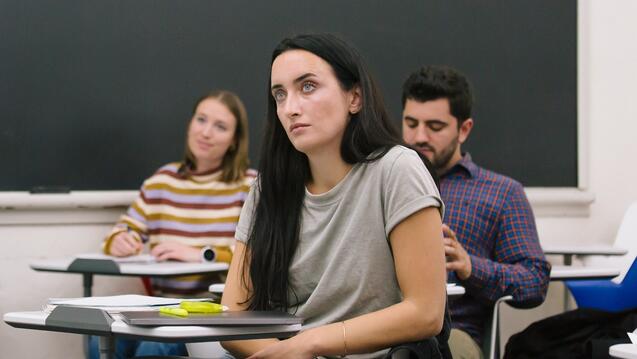School of Nursing Paves a Path From Classroom to Clinic

Babies are born regularly in Room 315 of USF’s School of Education building. The lucky parents? Maternity robots designed to teach nursing students how to treat patients in labor.
The Immersive Learning Center at USF enables students to practice nursing before they ever enter a hospital, said Janice Mark, faculty director of the center and assistant professor in the School of Nursing and Health Professions. The center uses a simulation lab in the School of Education building and a skills lab in Cowell Hall.
The maternity manikin is just one of many computerized manikins that students work with in the simulation lab, said Mark. In a pediatric room, a surgical room, and a space dedicated to nursing fundamentals, students are taught a full range of procedures and practices, including patient assessments and safety checks, and they confront scenarios like a patient falling out of bed.
“The manikins all have pulses that you can feel in the different pulse sites,” Mark said. “We can set up the heart rate to have abnormal rhythms and have a heart attack. You can actually shine a light into the pupils and they will constrict. We can even make them talk.”
In the skills lab, there are 10 manikins in hospital beds for students to practice things like IV insertion, wound dressing, and injections. The center has also recently acquired two Pyxis machines, automated medication dispensers used in hospitals and pharmacies.
Kaitlyn Chau MSN ’26, a student in the Clinical Nurse Leader program and a teaching assistant in the skills lab, practices procedures on the manikins, both for herself and the students she guides.
“You realize that obviously a fake arm is different from a human arm, but just the practice of threading the catheter into the arm translated into when I eventually did it on a real patient,” Chau said. “We practiced for hours on two different lab days. I also had my clinical instructor with me in the room when I did the IV insertion, [and they] helped me through the whole process.”
Chau added that “instructors don’t really highlight mistakes. They call it ‘practice.’ And you can practice as many times as you need.”


